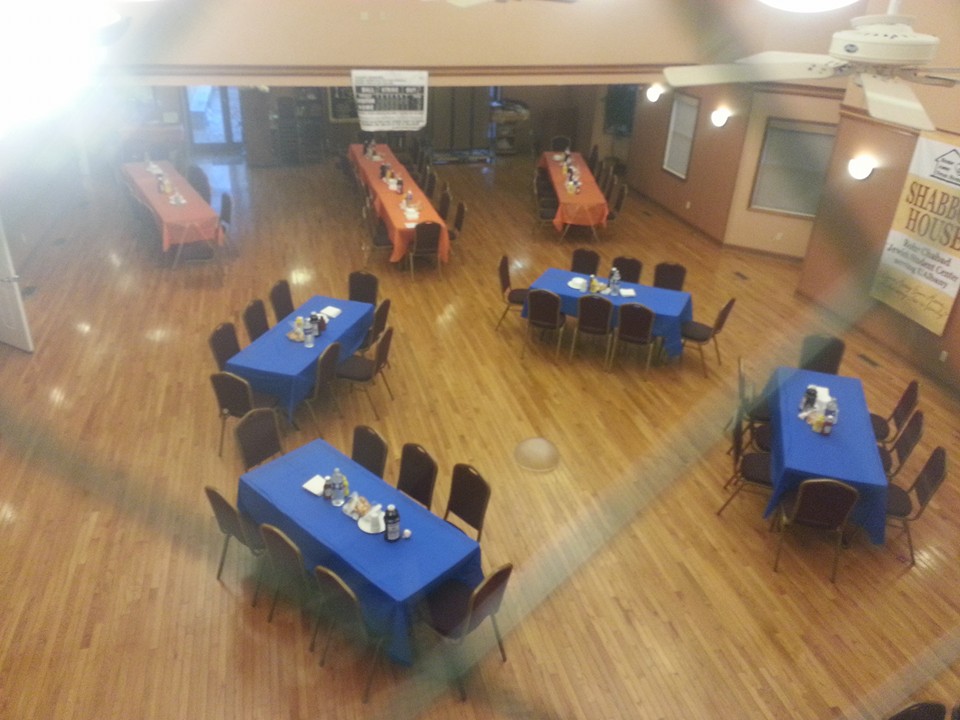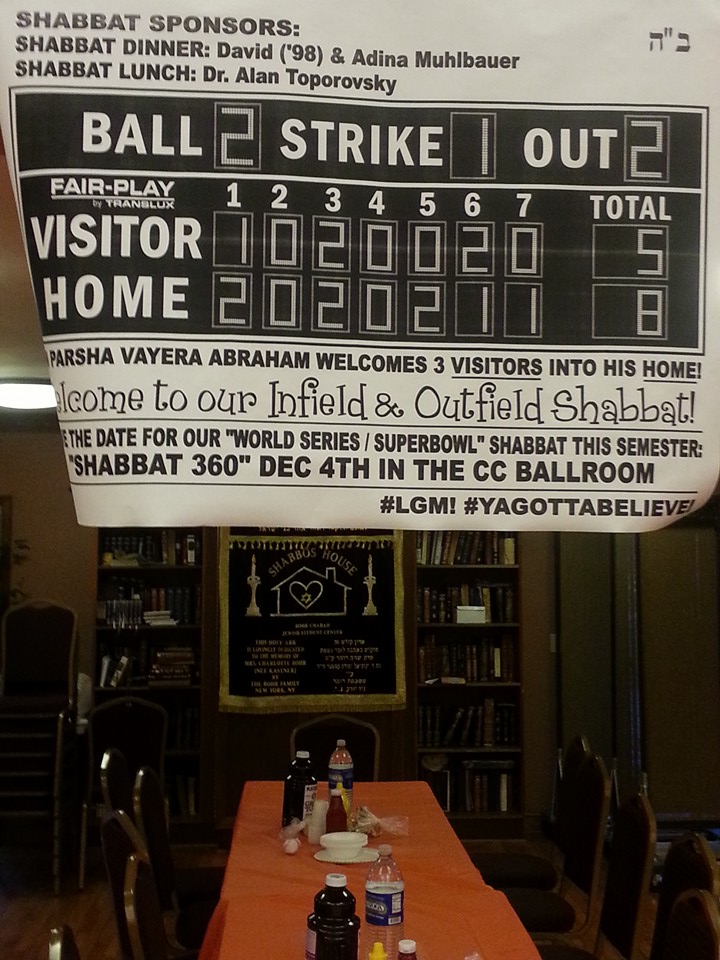 For Shabbat of October 30th, Game 3 of the Mets in the World Series 2015, we set up the Shabbat dinner tables into an infield diamond (with blue tablecloths) and an outfield of 3 rows of tables (with orange tablecloths) for right field, center field and left field, all inclining away from the infield diamond. You might not be able to see it from this vantage point, but we put an upside down large mixing bowl in between 1st and 3rd as a pitchers mound. And the menu? We did a whole baseball-style menu from pretzel-shaped Challahs to sliders, with baked-beans, steak fries, cole-slaw, popcorn, and even cans of soda (though we don’t serve soda here regularly for a long time now). And MatzahBALL soup, of course!
For Shabbat of October 30th, Game 3 of the Mets in the World Series 2015, we set up the Shabbat dinner tables into an infield diamond (with blue tablecloths) and an outfield of 3 rows of tables (with orange tablecloths) for right field, center field and left field, all inclining away from the infield diamond. You might not be able to see it from this vantage point, but we put an upside down large mixing bowl in between 1st and 3rd as a pitchers mound. And the menu? We did a whole baseball-style menu from pretzel-shaped Challahs to sliders, with baked-beans, steak fries, cole-slaw, popcorn, and even cans of soda (though we don’t serve soda here regularly for a long time now). And MatzahBALL soup, of course!
 The “scoreboard’ hanging in middle of the room, behind second base, over center-field made the “Visitors” and “Home” connection with this week’s Torah portion of Vayera, when Abraham welcomes 3 VISITORS into his HOME!
The “scoreboard’ hanging in middle of the room, behind second base, over center-field made the “Visitors” and “Home” connection with this week’s Torah portion of Vayera, when Abraham welcomes 3 VISITORS into his HOME!
Let’s start with the pitch. The pitcher provides the opportunity for the batter to hit the ball. Obviously, the pitcher is on the other team and does whatever possible to ensure that the batter will strike out. But nevertheless, he has to get those balls over the plate even as he tries to curve or sink or do whatever it takes to make it as hard as possible for the batter to make contact.
Isn’t life like that? Some of us wait around for the perfect pitch, that sails across our plate just the way we like it. But pitchers aren’t in business to give us those kind of desirable pitches. Usually, we have to take something that isn’t exactly the way we like it, but give it all we got, and make the most of it.
Now onto the infield vs. outfield message. Baseball is different than football, where the offensive player accompanies or receives the ball all the way at the end zone or intended goal. In baseball the offensive player’s goal is to send that ball as far out of reach as possible. A homerun over the fence is no doubt the ideal, but even a line-drive that goes out to the gap between shortstop and second base would be fine, too. The further out it goes, the more possible it makes it for the player to round the bases in the infield.
Think of Mitzvot this way. We make contact, shoot them way out – their reach is way beyond ours. But we have to round the bases in the infield, do the requirements and specifications of the Mitzvah in our world, within our limited reach, while the Mitzvah flies much further beyond, powering and uplifting all that we do here.
